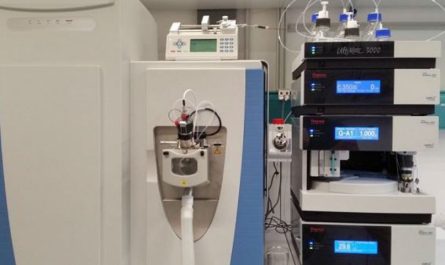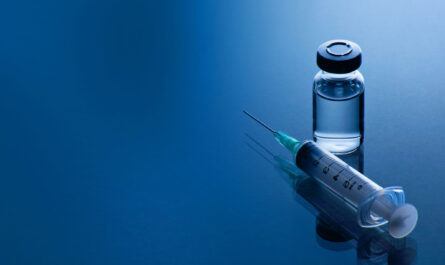
The Rise of Homecare Self-Monitoring Devices
As healthcare systems face mounting pressures from aging populations and rising costs, homecare self-monitoring devices are becoming increasingly important tools for empowering patients and facilitating remote care. These devices allow patients to monitor their health from the comfort of their own home, reducing the need for costly trips to doctors’ offices or hospitals. Through continuous monitoring and automated transmission of health data, self-monitoring devices are also helping to transform healthcare into a more proactive and preventative model focused on catching issues early. In this article, we will explore the growth of the homecare self-monitoring device market and some of the key technologies fueling this change.
Enabling Remote Patient Monitoring
Homecare self-monitoring devices are central to the expansion of remote patient monitoring services. By collecting health metrics like vital signs, activity levels, blood glucose readings and more, these devices allow caregivers to closely track patients’ well-being between visits. Healthcare providers can identify any concerning trends in a patient’s data and take action before issues escalate, leading to better outcomes and cost savings. several major players are expanding their offerings to facilitate remote patient monitoring programs. For example, medical device giants Medtronic and Abbott now market integrated platforms that combine devices, mobile apps, and cloud databases to enable the automated transmission of readings from home to clinicians.
Wearable Technologies Take Off
Wearable devices like smartwatches and fitness trackers have become a foundational technology powering remote monitoring. By continuously and passively collecting biometrics like heart rate, activity levels and sleep patterns, these easy-to-use trackers provide clinicians with rich longitudinal health insights. Brands like Apple, Fitbit, and Garmin now offer FDA-cleared devices tailored for remote patient monitoring. For example, the Garmin Vivosmart monitors blood pressure, ECG, SPO2 and more. Data from these trackers can automatically upload to patient portals where nurses and doctors can access it. The global market for remote patient monitoring devices is projected to reach $117 billion by 2025, driven largely by the growth of convenient and affordable wearables.
Advancements in Chronic Condition Management
Self-monitoring devices are having a notable impact on managing chronic health issues requiring consistent observation. For conditions like diabetes, congestive heart failure (CHF), and chronic obstructive pulmonary disease (COPD), frequent data collection is key to detecting issues and triggering interventions. Compact home units now simplify monitoring of glucose levels, weight, blood pressure, pulse oximetry, and more. For example, continuous glucose monitoring (CGM) systems like Dexcom’s G6 have transformed diabetes care by automatically collecting interstitial glucose readings every 5 minutes. Combined with smart insulin pens and pumps, these advances are helping more patients achieve optimal control of their chronic conditions from home.
Continued Innovation on the Horizon
The self-monitoring device sector continues to evolve rapidly, with exciting new products on the horizon. Point-of-care testing devices are getting smaller and more user-friendly, allowing home collection of lab-quality readings for metrics like HbA1c, lipids, kidney function markers and more. Ambient medical sensors that passively and continuously monitor vital signs without direct contact are in development stage. Portable ultrasounds, retinal scanners and other imaging modalities may one day enable basic screening and follow-ups to occur remotely. Artificial intelligence will play an increased role too – analyzing streams of home monitoring data to predict issues, guide interventions and optimize treatment. While regulatory and reimbursement landscapes must keep up, the future of homecare promises even greater empowerment of patients through innovative self-monitoring technologies.
Security and Data Privacy Considerations
As more intimate health data is collected and transmitted outside of traditional clinical settings, security and privacy become paramount concerns. Device manufacturers and healthcare providers must work closely with cybersecurity experts and privacy regulators to build protection measures from the ground up. Enterprise-grade end-to-end encryption of transmitted data, stringent access controls, and prompt disclosure of breaches will be critical to earning public trust. Patients should have full transparency and control over how their data is used, shared, and safeguarded. Standards for data ownership models, permissible secondary uses, and consent management are still evolving. Overall, prioritizing cybersecurity and privacy from the outset will be key to unleashing the benefits of home monitoring while safeguarding individuals.
Reimbursement is Another Hurdle
Though invaluable from a care perspective, many homecare self-monitoring services and devices still face obstacles to widespread adoption due to patchy insurance coverage. Private payers and government programs vary significantly in which devices and services they cover under medical benefits or wellness programs. While recognizing remote monitoring saves them money overall, insurers have been slow to establish consistent reimbursement policies. Reforming these policies to provide upfront or bundled payments for self-monitoring and data evaluation could ease costs for providers and patients alike. As clinical evidence mounts, and demand grows for consumer-directed virtual care models, coverage is expected to expand over time. But reimbursement modernization is critical to maximize remote monitoring’s potential benefits at scale.
Conclusion
In summary, homecare self-monitoring devices are ushering in a new patient-centric era of preventative, proactive healthcare. These convenient, connected tools empower patients to take a hands-on role in managing their wellness from home while reducing costs. Remote monitoring data enhances care teams’ insights for timely interventions while continuous innovation will make care even more accessible. While challenges around security, privacy, and insurance persist, the potential of self-monitoring gives hope for a healthier, more sustainable future for all. With joint efforts from industry, healthcare experts, regulators and payers – this patient-driven healthcare revolution is poised to transform systems worldwide.
*Note:
- Source: Coherent Market Insights, Public sources, Desk research
- We have leveraged AI tools to mine information and compile it


